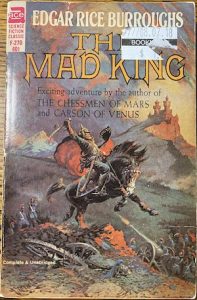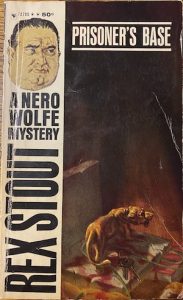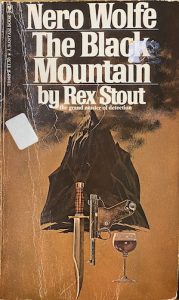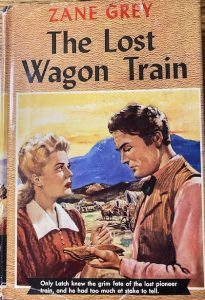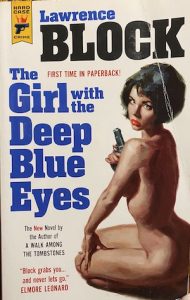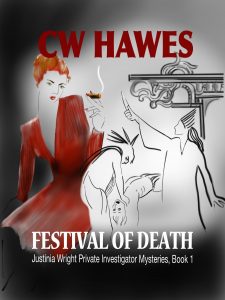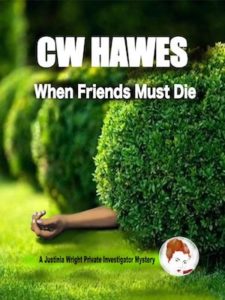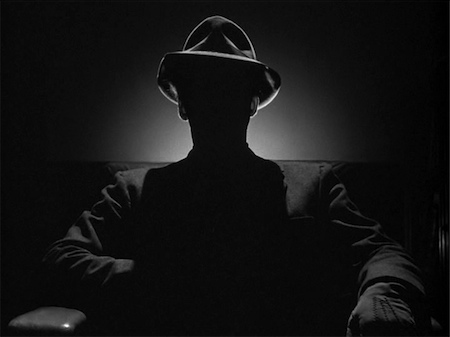
These days the term “thriller” is pretty much used indiscriminately. Indie writers are especially guilty of this abuse, but traditional publishers are in nowise innocent.
I suppose, in order to get us readers to buy books, the term “thriller” is plastered all over the book, used throughout the description, and liberally sprinkled in the advertising. The idea being that the book will “thrill” us. And who doesn’t want a few thrills in life?
But that isn’t at all what a thriller is. At least technically speaking. And if we readers don’t want to read thrillers, it would be very helpful if writers and publishers stopped calling everything a thriller when it isn’t.
Let’s take a look at what constitutes a mystery, a suspense novel, and a thriller.
What Is a Mystery?
A mystery is essentially a puzzle. The form we are most familiar with is the detective novel, which was invented by Edgar Allan Poe and popularized by Sir Arthur Conan Doyle.
In a typical mystery, there is minimal action. The sleuth goes about sleuthing to find the solution to the puzzle, which is some type of crime, usually murder. The detective is not often in danger, although other characters often are.
The suspense is usually minimal — although the author may crank it up near the end of the story.
The mystery novel is more or less an intellectual read. It’s appeal is the solving of the puzzle by the reader before the detective, or enjoying the detective’s process in solving the case. The traditional mystery is definitely not an action-packed read.
Recently I re-read Fer-de-Lance by Rex Stout. It’s the first Nero Wolfe mystery.
I was surprised at how little action there was in the book, which was published in 1934. Wolfe, who in some books weighs a seventh of a ton, sits, drinks beer, questions people, tends his orchids, eats, and thinks. That’s it.
Archie Goodwin, Wolfe’s assistant who tells the story, drives from NYC to White Plains numerous times. He questions people for Wolfe, makes wisecrack remarks, gives us his observations, and also thinks about the case.
The only “action” occurs towards the end of the book when Wolfe stages a robbery to get a person to talk. Wolfe’s life is threatened once, also near the end of the book. And Archie punches a cop. That’s it. Definitely not action-packed, although the suspense does ramp up a bit at the end; yet the book is a thoroughly delightful read. Stout achieves this by the use of plenty of humor, interesting characters, and the laying out clues for our consideration.
What Is A Suspense Story?
A story of suspense may be a mystery, but the difference is that the reader knows more than the protagonist. Frequently, the reader knows who the bad guy is long before the good guy does. And because we, the reader, know things the hero doesn’t — suspense is created.
Will the hero realize there is a viper in the basket? Will he or someone else open the basket and get bit? That’s the creation of suspense.
The suspense novel also has a limited scope. The protagonist, the hero or heroine, is the one who’s primarily in danger.
A classic example of the suspense story is Hitchcock’s film North by Northwest. The story is about a man who is mistaken for someone else: a man trying to foil a plot to steal government secrets. Plenty of suspense is generated as the good guy tries to escape the bad guys. Especially because he has no idea who is after him and why.
What Is A Thriller?
At the risk of oversimplification, a thriller is a suspense tale on steroids.
Whereas a suspense novel is generally focused on the protagonist and if he or she will beat the villain, the thriller has much higher stakes. The villain is going to destroy the city, or country, or world. The protagonist must not only stop the villain, but must stop the series of events the villain’s set in motion that will take down the world’s economy, for example.
Thrillers are usually villain-driven. The villain shares the stage with the hero.
A classic example of the thriller is the film Die Hard. We have the villain seize control of a corporation’s headquarters and hold hostage those inside the building, who are at the company Christmas party, in order to steal a fortune in bearer bonds. There is only one man in the building who can stop the villain and save the hostages.
There is plenty of suspense; some mystery, because we don’t know at first what the real goal of the terrorists is; and loads of action. That’s the thriller: suspense, action, and high stakes.
Novels such as The DaVinci Code and The Hunt for Red October raise the stakes even higher.
Mixing It Up
People being who they are, like to mix things up. There may be elements of mystery in both suspense and thriller tales, as noted above, but it isn’t the main element.
There may be plenty of suspense in a thriller, but the nature of what is at stake is different from that in a pure suspense story.
Lee Child, for example, writes what are essentially action novels, even though they are labelled thrillers. The stakes in a Reacher novel are small, at least the ones I’ve read. Either Reacher has to get himself out of a predicament or decides to get someone else out. There is nothing big, like the destruction of the world’s economy, at stake. Which means, technically, the books aren’t thrillers. But in the process of getting out of trouble, there is loads of action. Bodies litter the ground before we close the book. Which makes the books in actuality action novels.
So even though the word “thriller” is applied to Child’s novels by his publisher, they don’t conform to the thriller formula. It is this blurring of distinctions, for the sake of marketing, that in my opinion does a disservice to readers. I guess action novels just don’t sell as well as thrillers.
Popular Tastes
Today the “thriller” — whether the book actually is one or not — is hot. A book labelled a thriller is sure to sell.
Even many writers of detective novels are trying to jump on the thriller bandwagon by ramping up the action and claiming that the “pages turn themselves”, which is of course utter nonsense. And action alone is not the sole hallmark of a thriller anyway.
To my mind, this is a shame. When the thriller reader picks up a mis-identified book, he or she ends up disappointed and may even negatively review it. And the mystery reader will shy away from such books thinking they’re thrillers, when in fact they aren’t.
The quest for the almighty dollar is no excuse, in my mind, to mislead us readers.
I read mysteries because I like the more sedate pace and the intellectual aspects of the story. I don’t particularly like thriller novels because they are often too long and have the inevitable slow spots, which make for boring reading and thus ruins the whole thriller aspect. I’d rather watch a thriller movie, if I’m in the mood for a thriller.
The best part of the indie revolution is that there are far more published authors now then there were pre-Kindle. And while many writers have jumped on the thriller bandwagon, there are also many, who, like me, write the traditional mystery. Some are:
JP Choquette
Lee Strauss
PF Ford
JA Menzies
J New
It’s a great day for readers. Many writers — good writers — who would never have been tapped for membership in the hallowed halls of traditional publishing, can now share their gems with us. Writer and reader are all the richer for this new age.
As usual, comments are always welcome, and, until next time, happy reading!
Share This!

 CW Hawes is a playwright, award-winning poet, and a fictioneer; as well as an armchair philosopher, political theorist, and social commentator. He loves a good cup of tea and agrees that everything’s better with pizza.
CW Hawes is a playwright, award-winning poet, and a fictioneer; as well as an armchair philosopher, political theorist, and social commentator. He loves a good cup of tea and agrees that everything’s better with pizza.